Blog Archives
Subscribe to:
Post Comments (Atom)
Labels
- "amitabh bachchan" "amitabh bachchan movies" "amitabh bachchan songs" "amitabh bachchan family"
- "History of the United States of america""When to date the start of the history of the United States is debated among historians. Older textbooks
- 10 Things Your Doctor Won’t Tell You About an MRI
- 100 Interesting Facts About islam
- 100 people dead in monster Nepal quake
- 11 facts that explain the escalating crisis in Iraq
- 1815
- 2009 Tonga
- 2011 California USA
- 27 Sex Facts You Need in Your Life
- 5 Top Best Casino Cities Around The World
- 8 steps to orgasm heaven
- Aamir Khan
- Aastha: In the Prison of Spring
- abama Tornado 2011
- abhishek bachhan
- abu al jawahiri
- Academy Award
- Action Film
- africa
- agra
- Agra Fort
- Ajambari Nata
- ali bird of Paradise
- am Charan Teja's wedding with Kamineni Upasana
- Amazing Facts About Adolf Hitler
- Amazing Photo
- Amazing Photo Moments
- Amazing Things You Didn’t Know A Banana Can Do!
- Ameena Qureshi
- American singer
- Amitabh Bachchan
- Amitabh Bachchan Biography
- amitabh bachhan
- An Introduction to Indian History
- ANGLO-NEPAL War with East India Company in Jeetgari
- animal
- anju panta nepali singer
- apple iphone
- Apple iPhone 6
- Arjuna Award for Cricket
- Atlantic Puffin
- august rush
- Bang Bang
- bangkok
- BANGKOK NIGHTLIFE
- Barak obama
- BATTLE OF DEUTHAL
- BATTLE OF JAITHAK
- BATTLE OF JEETGARH
- BATTLE OF KHALANGA NALA PANI
- Battle of Nalapani
- BATTLE OF PARSA
- bcci
- Beautiful Nepali Model Akriti Shah Pictures
- Ben Kingsley
- Best Special Forces in the world
- Beyoncé Knowles
- Bharat Ratna
- Bharatiya Janata Party
- bhuddhisam in Japan
- Big Movies Nepal
- Biggest Cruise Ships Allure of the Seas
- birds
- Birendra Bir Bikram Shah Dev
- birth to Siddhartha Gautama
- blood transfusions.
- Bonnie Hunt
- Boom
- Bradley Pierce
- Brash adventurer
- Brighton Rock
- British Prime Minister David Cameron
- buddha birth place
- buddha piligram
- Buddha temple
- Buddhism
- Buddhist pilgrimage
- Burj Dubai
- Burj Khalifa
- butwal
- California Condor
- Canada
- Cannibalism In China
- cannibalism still exist
- Cano Cristales
- Casanova
- casinos in Kathmandu
- cat meat
- cause an explosion
- Chandigarh
- chennai super kings
- Chetan Anand
- Chetan Bhagat
- Chicago
- china
- Chiranjeevi
- Chris Pratt
- Cinema in kathmandu
- Coca Cola
- coca cola india
- coca cola nepal
- coca cola pakistan
- Coke is phosphoric acid. Its Ph is 2.8
- Colorful Exotic Birds
- Common Muslim Names
- Commonwealth Games (CWG) Delhi Opening Ceremony 2010
- Commonwealth Games scam
- Countries with Nuclear Weapons
- Craig Robinson
- Cricket World Cup
- Crime Fiction
- Curious Scandals of Indian Swamis
- D.A.V. School
- Damodardas
- Damodardas Mulchand Modi
- Daniel Weber
- Danxia Landform Geological Park (China)
- darling tere liye - 3 times Munni ke gaal gulabi
- Dave Batista
- De Motivational Posters
- Dead Vlei (Namibia)
- dhoni
- Dhoom 3: Back in Action
- Dilip Rayamajhi
- Dipendra Bir Bikram Shah Dev
- DIVINE 4.2 LED TV FOR ANDROID FROM ARISE INDIA
- Divya Narendra Founder Of Facebook Originally ConnectU Harvard Connection
- dog meat
- Dr. Iain Hutchison
- Drama
- Dubai building Projects
- Dubai Marina
- dubai Old Town
- Dubai Sports City
- Dubai Waterfront
- Dubailand Ski Dome
- Ducati Diavel
- eacocks
- ear's Macaw
- Ebola fever
- Ebola virus
- Ek Tha Tiger
- Elizabeth Bolden
- Elvis Presley
- Eruption of Mount St. Helena
- Extinct Animals – Interesting Facts and Information
- Extremely Dangerous Gangs in The World
- Eyjafjallajokull Volcano
- Facebook 101: Ten Things You Need to Know About Facebook
- facial tumours
- Fact About Bananas
- Famous Political Leaders who were Assassinated
- Famous Stars Who Died Too Young
- film 'Gandhi
- filovirus
- Fly Geyser
- Former President of South Africa
- Fraser C. Robinson III
- Futuristic Concept Hotels In the world
- Gallanthayyinde
- Gandhi
- gangs of wasepur
- Gemini Ganesan
- Girls in bangkok
- Go Go Bar Girl
- Go Go Bar Girl Pricing
- Golden Dome
- good morning vietnam
- Grandson Entertainment
- Great Wall of China
- Great Way To Make Money Online
- Guardians of the Galaxy
- Guardians of the Galaxy 2
- Guiness World Records
- Gujarat University
- Gunde Jaari
- Gyanendra Bir Bikram Shah Dev
- Hannah Montana
- Harley Davidson Roadking
- Harmandir Sahib
- Harvard Law School
- Haseen Qureshi
- Having Fun In The Shower
- he Golden Pheasant
- Heeraben Modi
- Highly Glamorous Buildings in the World
- Hijras
- hindi joke
- History of the Ancient Aryans
- horrific facial disfigurement
- Hot And Oily In The Tub
- hot and sexy mallu aunty
- hot desi girls
- Hot Kingfisher Calender Girl
- Hottest Female Tennis Players of All Time
- How Much Do YouTubers Make? The Top 25 Earning Creators
- How to Become a Buddhist
- Huma Qureshi
- human body meat
- human meat
- Humayun's Tomb
- Hurricane Katrina
- Hydropolis
- icc
- icc wprld cup
- iller disease
- Illinois
- Immaan Dharam
- india and pakistan world cup cricket
- Indian baby names or hindu girl names
- Indian crecketer
- indian Cricketer
- Indian Man Claims He’s 179 Years Old
- indian oldest man
- indian oldest women
- indian premier league
- indian railway
- Individual Lean meats
- infected body fluids
- Interesting Facts you probably didn’t know about Apples
- Internet Hoaxes About India
- Internet Marketing
- Internet Marketing An Hour A Day
- iPhone 6 and iPhone 6 plus
- iphone 6 s
- ipl
- irctc
- Is chinese people eating babies
- Is Iran Helping the U.S. Dislodge ISIS from Iraq?
- Is it safe to enjoy intercourse during that time of the month? Menstruation?
- ISIS A Short History
- isis in america
- isis in australia
- isis in india
- isis in iraq
- isis in pakistan
- isis in united kingdom
- islamic terorist
- islamik jehad
- Jab Tak Hai Jaan
- Jacqueline Fernandez
- Jal Shah
- japan
- Jashodaben Modi
- Jisshu Sengupta
- Jonathan Hyde
- Jose Mestre
- Jose Mestre : The Man With No Face
- Jumanji
- jurasik park
- just after they are done with sex
- Jwala Gutta
- Kama Sutra: A Tale of Love
- Kamineni Upasana
- kapil dev
- Karenjit Kaur Vohra
- Karishma Kaa Karishma
- Karthik Raja
- Kasam
- Katheryn Elizabeth
- Kathmandu
- Katrina Kaif
- Katy Perry
- Kick
- kick Blockbuster
- Kingfisher
- Kingfisher Calender
- kings 11 punjab
- kings11 ponjab
- Kirsten Dunst
- kullu photo
- Landslide
- Largest American Companies
- lion
- Lollipop
- London
- london photo
- lord buddha
- lord buddha in Japan
- Lord Gautam Buddha Mother Mahapajapati Gotami Maha Maya Devi
- Lord Gautam Buddha Sister Sundari Nanda
- Lounge & Nightclubs
- lumbini
- Lumbinī
- lumbini hotel
- lumbini terrace homes
- Madinat Al Arab
- Madona
- Mahashta Mûrasi
- Mahendra Bir Bikram Shah
- makdee-actress shweta basu prasad-caught in high profile prostitution racket
- Make Money
- Make Money Online
- Make Money Online With Resale Rights Products
- Malia Ann Obama
- man eater
- manali photo
- Mardaani
- Mariah Carey
- Marian Shields Robinson
- Meet the Kulkarnis: India's tallest family with a combined height of 26ft hope to set a new world record
- mery com
- Michelle Obama
- Miley Cyrus
- monkey
- More than 1
- Most Amazing Bridges in The World
- Most Beautiful Mosques in the World
- Most Dangerous Airport Landings in The World
- Most Dangerous Snake Species in the World
- Most Glamorous Women Politicians of The World
- Most Iconic Images of Photography
- Most Luxurious and most expensive Houses Of The World
- Most Popular Celebrity Gossip Websites
- Most Popular Game Websites
- Moto Guzzi Bellagio 940
- Mukesh Aggarwal
- mumbai railway
- Mumtaz Mahal
- Munni badnaam hui
- Mvezo
- Naeem Qureshi
- nain sharabi
- Nana Enertainment Plaza
- Nana Red Light District Bangkok
- Nana Red Light District Bangkok Thailand
- Narendra modi in japan
- Natasha Obama
- National Badminton Champion
- nature photo
- Nawazuddin Siddiqui
- Nelson Mandela
- Nelson Mandela Biography
- Nepal
- Nepalese actor
- nepali dress
- nepali movie Afno Manche
- nepali movie Maiti
- Nepali teej
- nepali teej song
- nepali women
- Nightlife In Kathmandu Nepal
- Niruta Singh
- Nobel Peace Prize
- Northern Cardinal
- Nuclear Weapons
- Nuclear Weapons in china
- Nuclear Weapons in india
- Nuclear Weapons in pakistan
- Nuclear Weapons in russia
- Oldest people ever
- oopoe
- osama bin laden
- pakistan
- Palm Island
- Palm Jumeirah
- Pankaj Modi
- pataya
- Penulis Senja
- Peter Quill
- Phantom
- Phool Bane Angaray
- Photos of Bollywood New Star Kids
- pollo Hospitals Pratap C. Reddy
- Polynesian
- Porn Photos
- pornographic actress
- Pradeep Sarkar
- Prahlad Modi
- Pretty Lady
- Prithivi Narayan Shah
- Prithvi Narayan Shah
- Psychedelic Places that Actually Exist In the earth
- Pushpavalli
- QFX Central
- QFX Jai Nepal
- QFX Kumari Cinema
- Quetzal
- Qutb Minar
- railway ticket booking
- Rajamati
- rajdhani
- Rajneeti 2
- Ram Charan Tej
- Randeep Hooda
- Rani Mukerji
- Ranveer Singh
- Red Lips
- Rekha
- Richard Attenborough
- River of Lava Flowing into the Ocean
- Robin Williams
- Romi Bhatia
- Royal Enfield Thunderbird 500
- Rupandehi
- Russian prostitutes
- sachin tendulkar
- Sajid Nadiadwala
- Saleem Qureshi
- salman khan
- Samsung Curved UHD 4K HU9000
- Samsung Galaxy Grand
- Samsung Galaxy Note 3
- Samsung I8552 Galaxy Grand Quattro
- Samsung smart Phones
- Sanjay Taneja
- Santa Banta Joke
- Saqib Saleem
- sardar joke
- Sarnia
- satabdi
- search engine marketing training
- sex in bangkok
- sexy aunty
- Shah Jahan
- Shantanu Moitra
- Shatranj Ke Khilari
- Shree Krishna Shrestha
- Shweta Basu
- Shweta Basu Scandal
- Siddhartha Gautam
- Sierra Leone
- Silsila
- snake meat
- So Undercover
- Soma Modi
- Sonali Raut
- south africa
- Sridevi and her filmmaker husband Boney Kapoor
- St Bartholomew's
- Stevie Wonder
- Sugauli treaty
- Sugauli Treaty (1815)- East India Company & Nepal
- Sukhumvit Soi
- Sundhara
- Sunny Gavaskar
- Sunny Leone
- Sunny Leone Biography
- Sunny Leone Dirty Home Video
- supreme court of india
- Suzuki Intruder M1800R
- Sweta Khadka
- sydney photo
- Tahir Bhasin
- taiwan
- Taj Mahal
- Taulihawa
- teej in butwal
- teej in nepal
- Temple in Nepal
- Temptations
- Thamel
- The Complete List of films Banned by Censor Board in India
- The Dirty Truth Behind Coca Cola
- The Last Song
- The Rainbow Lorikeet
- the scamp
- The Seven Wonders of the World
- These Pictures Will Make You Wish You Were Rich
- third gender
- Thriller
- tiger
- Tips to improve Fuel Economy
- Tōji temple in kyoto japan
- tokyo
- Top 15 Most Popular Business Websites
- Top 15 Most Popular Search Engines | March 2015
- Top 20 of the World’s Richest Porn Stars
- Top 40 sex positions For orgasm
- Top 50 Earning Blogs!!! on the internet
- TOP COUNTRIES WITH LARGEST NUCLEAR WARHEADS
- Top Tallest Buildings in Asia
- Top ten Largest Nuclear Weapons Countries in year 2013
- Total Dhamaal
- transgender
- transgendered people in india
- TREATY OF SUGAULI
- Tribhuvan Bir Bikram Shah
- Tulip Fields in Lisse (The Netherlands)
- Tyler Bates
- Undersea Volcano
- United States
- University of Delhi
- us president
- varanasi
- Vasantiben Hasmukhlal Modi
- Verified oldest living men
- Victory Vision
- Vin Diesel
- Voodoo
- wall paper
- We Can't Stop
- What are Ebola’s symptoms
- What Muslim women really want in the bedroom
- When I Look at You
- When is the best time to get pregnant?
- WHO
- Why does a Male dog's Penis get stuck inside the Female
- Wildlife Species You Must See Before They Disappear
- world’s most deadly diseases
- Worst Railway Accidents in India
- Wrecking Ball
- Yamaha Vmax
- Yash Raj Films
- You Don't Get Life a Second T
- Zoe Saldana
- Zoya Afron
- मुन्नी बदनाम हुई' गीत की सप्रसंग व्याख्या





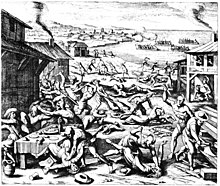
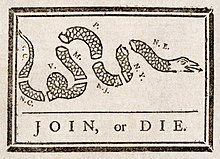
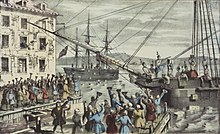

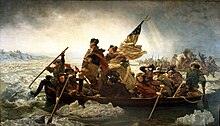

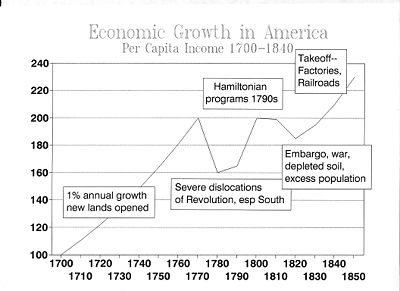

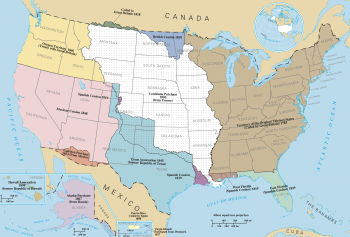




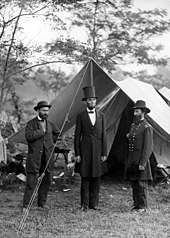

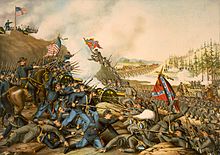




.jpg)
.jpg)
.jpg)
.jpg)
No comments:
Post a Comment